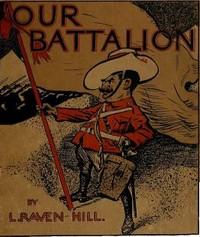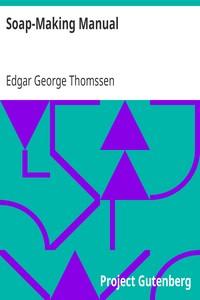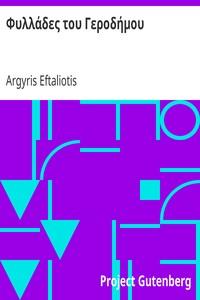Read this ebook for free! No credit card needed, absolutely nothing to pay.
Words: 86413 in 16 pages
This is an ebook sharing website. You can read the uploaded ebooks for free here. No credit cards needed, nothing to pay. If you want to own a digital copy of the ebook, or want to read offline with your favorite ebook-reader, then you can choose to buy and download the ebook.


: Encyclopaedia Britannica 11th Edition Arculf to Armour Philip Volume 2 Slice 5 by Various - Encyclopedias and dictionaries
may even be used in combination; thus 16 may be followed by 16a and 16b, and these by 17, and in such a case the ordinal 100 does not correspond with the total number up to this point.
Arithmetic is supposed to deal with cardinal, not with ordinal numbers; but it will be found that actual numeration, beyond about three or four, is based on the ordinal aspect of number, and that a scientific treatment of the subject usually requires a return to this fundamental basis.
In using an ordinal we direct our attention to a term of a series, while in using a cardinal we direct our attention to the interval between two terms. The total number in the series is the sum of the two cardinal numbers obtained by counting up to any interval from the beginning and from the end respectively; but if we take the ordinal numbers from the beginning and from the end we count one term twice over. Hence, if there are 365 days in a year, the 100th day from the beginning is the 266th, not the 265th, from the end.
Underlying this definition is a certain assumption, viz. that if we take the objects in a different order, the last symbol attached will still be 253. This, in an elementary treatment of the subject, must be regarded as axiomatic; but it is really a simple case of mathematical induction. If we take two objects A and B, it is obvious that whether we take them as A, B, or as B, A, we shall in each case get the sequence 1, 2. Suppose this were true for, say, eight objects, marked 1 to 8. Then, if we introduce another object anywhere in the series, all those coming after it will be displaced so that each will have the mark formerly attached to the next following; and the last will therefore be 9 instead of 8. This is true, whatever the arrangement of the original objects may be, and wherever the new one is introduced; and therefore, if the theorem is true for 8, it is true for 9. But it is true for 2; therefore it is true for 3; therefore for 4, and so on.
A brief account of the development of the system will be found under NUMERAL. Here we are concerned with the principle, the explanation of which is different according as we proceed on the grouping or the counting system.
On the grouping system we may in the first instance consider that we have separate symbols for numbers from "one" to "nine," but that when we reach ten objects we put them in a group and denote this group by the symbol used for "one," but printed in a different type or written of a different size or of a different colour. Similarly when we get to ten tens we denote them by a new representation of the figure denoting one. Thus we may have:
ones 1 2 3 4 5 6 7 8 9 tens 1 2 3 4 5 6 7 8 9 hundreds, 1 2 3 4 5 6 7 8 9 &c. / &c. &c.
On the counting system we may consider that we have a series of objects , and that we attach to these objects in succession the symbols 1, 2, 3, 4, 5, 6, 7, 8, 9, 0, repeating this series indefinitely. There is as yet no distinction between the first object marked 1 and the second object marked 1. We can, however, attach to the 0's the same symbols, 1, 2, ... 0 in succession, in a separate column, repeating the series indefinitely; then do the same with every 0 of this new series; and so on. Any particular object is then defined completely by the combination of the symbols last written down in each series; and this combination of symbols can equally be used to denote the number of objects up to and including the last one .
In writing down a number in excess of 1000 it is usual in England and America to group the figures in sets of three, starting from the right, and to mark off the sets by commas. On the continent of Europe the figures are taken in sets of three, but are merely spaced, the comma being used at the end of a number to denote the commencement of a decimal.
The zero, called "nought," is of course a different thing from the letter O of the alphabet, but there may be a historical connexion between them . It is perhaps interesting to note that the latter-day telephone operator calls 1907 "nineteen O seven" instead of "nineteen nought seven."
If the numbers were written down in succession, they would naturally proceed from left to right, thus:--1, 2, 3,... This system, however, would require that in passing to "double figures" the figure denoting tens should be written either above or below the figure denoting ones, e.g.
The placing of the tens-figure to the left of the ones-figure will not seem natural unless the number-series runs either up or down.
Free books android app tbrJar TBR JAR Read Free books online gutenberg
More posts by @FreeBooks

: Our Battalion Being Some Slight Impressions of His Majesty's Auxiliary Forces in Camp and Elsewhere by Raven Hill L Leonard - Caricatures and cartoons Great Britain; Armies Caricatures and cartoons


: Soap-Making Manual A Practical Handbook on the Raw Materials Their Manipulation Analysis and Control in the Modern Soap Plant. by Thomssen Edgar George - Soap Technology






